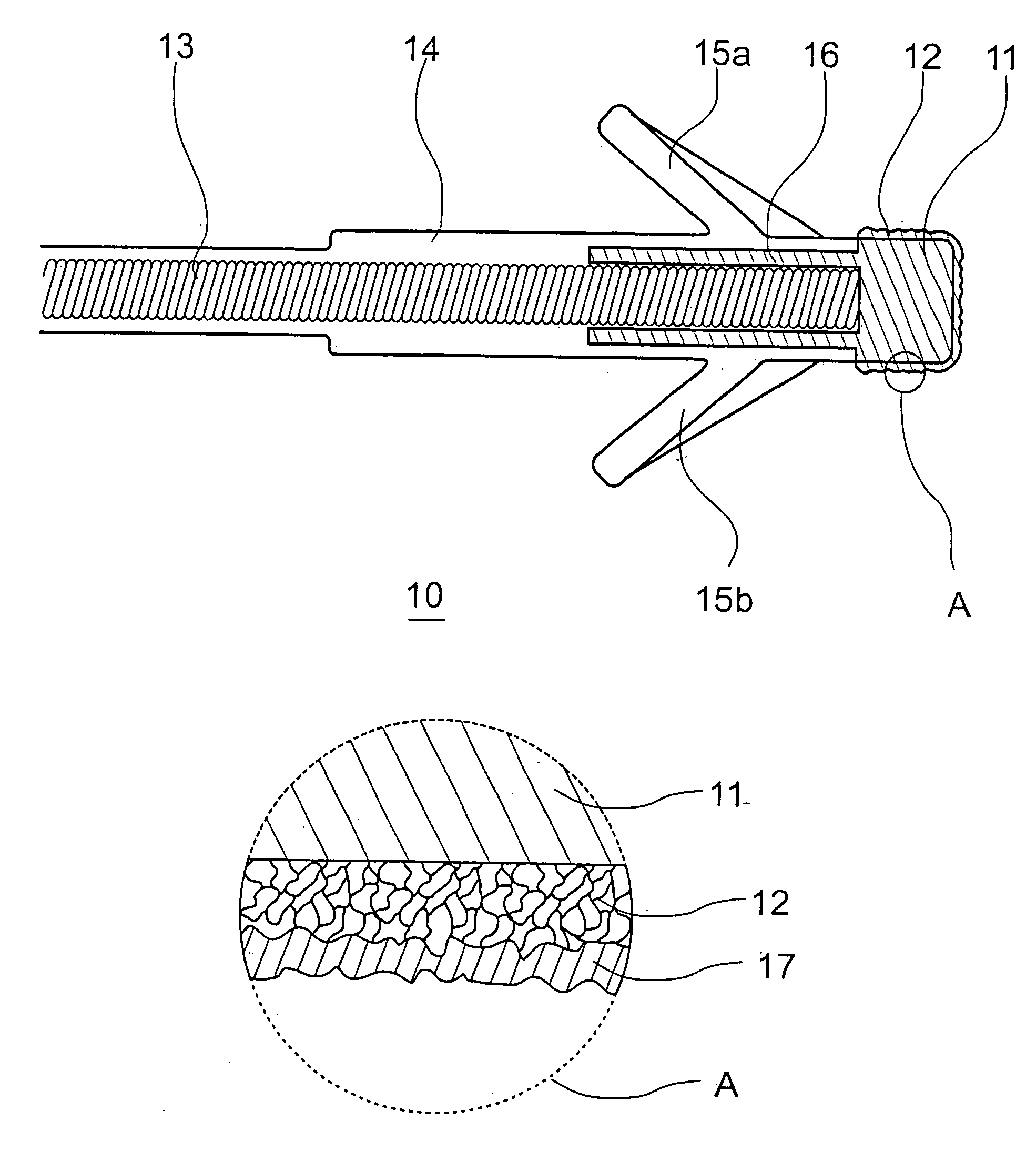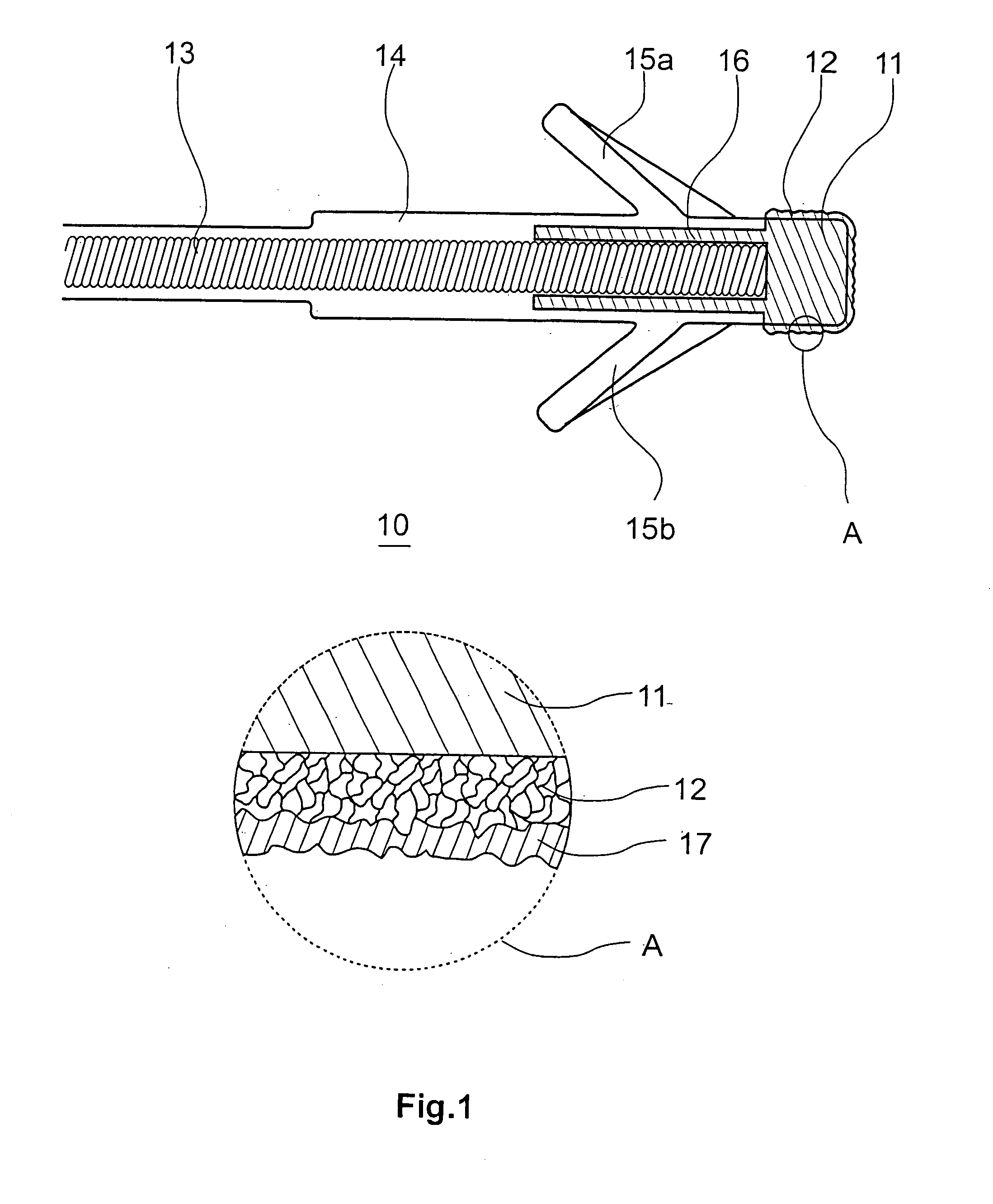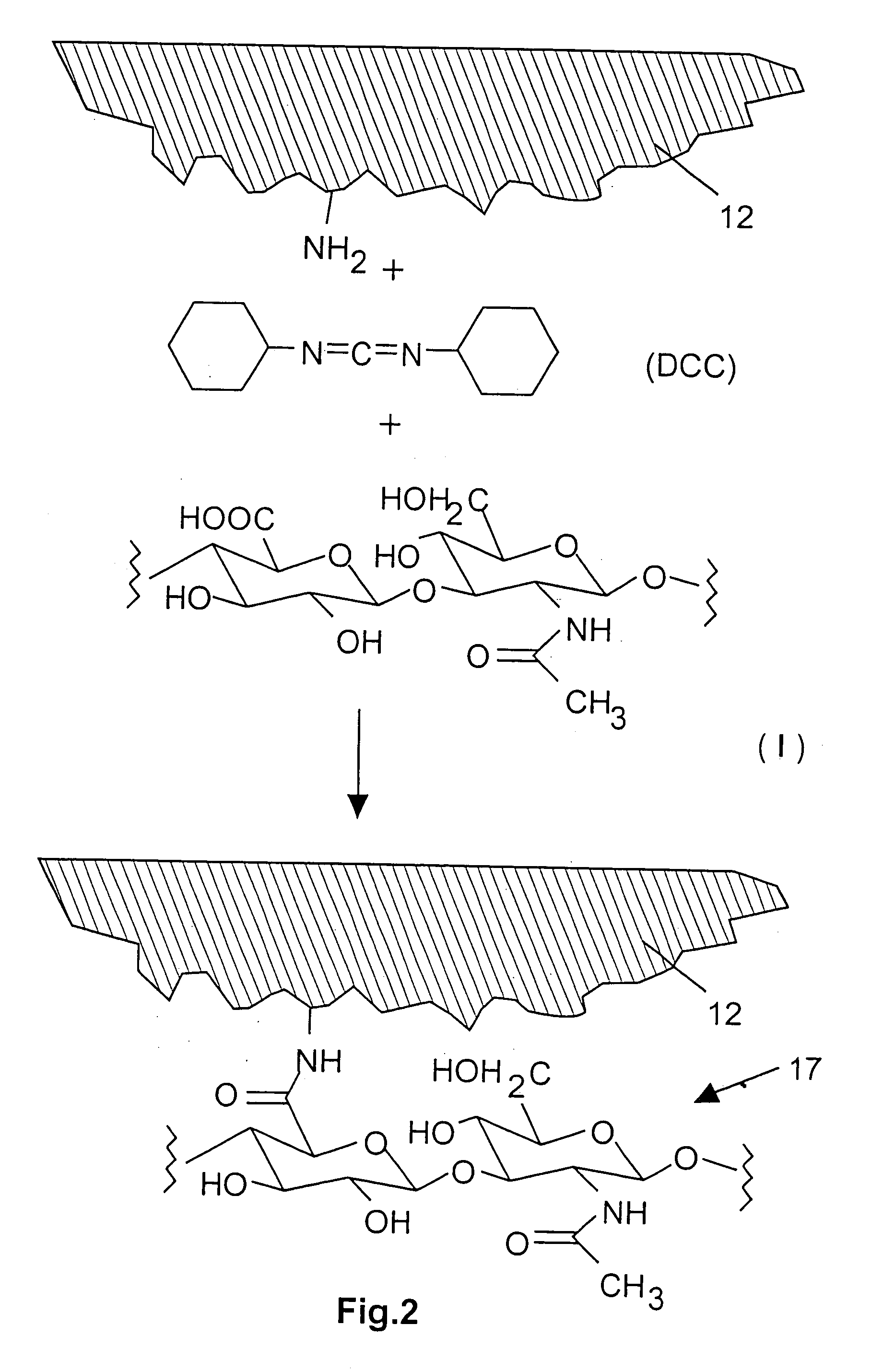Implantable Stimulation Electrode with a Coating for Increasing Tissue Compatibility
a stimulation electrode and tissue technology, applied in the field of implantable stimulation electrodes, can solve the problems of high implementation cost, negative influence on the long-term stimulation properties of the system, etc., and achieve the effects of avoiding tissue irritation, high biocompatibility, and increasing irritation thresholds
- Summary
- Abstract
- Description
- Claims
- Application Information
AI Technical Summary
Benefits of technology
Problems solved by technology
Method used
Image
Examples
exemplary embodiment 1
Covalent Bonding
[0039]FIG. 2 discloses a schematic illustration of the construction and the preparation of a coating 17 made of hyaluronic acid, this coating being covalently bonded to the surface underneath, i.e., specifically the iridium nitrate coating 12. Alternatively or additionally, the bonding may be performed through physisorption of the hyaluronic acid on the iridium nitrate coating 12. Physisorption is understood as any electrostatic interaction between the surface of the iridium nitrate coating 12 and the hyaluronic acid (I), in particular Van der Waals interaction.
[0040]In a first method step (not shown here), amination of the iridium nitrate surface 12 is performed. Numerous known methods may be used for this purpose, primary or secondary amines, but preferably primary amines, being fixed on the surface of the iridium nitrate coating 12. Plasma activation in the presence of amines, e.g., N-heptyl amine or other aliphatic or aromatic amines, particularly suggests itself...
exemplary embodiment 2
Immersion Coating
[0043]In addition to covalent bonding, hyaluronic acid and / or hyaluronic acid derivatives may also be applied to the electrode surface through simple immersion coating.
[0044]The electrode surface was precleaned and degreased and laid for 10 minutes at room temperature in an aqueous solution of hyaluronic acid having a molecular weight of at least 1,000,000 g / mole with light stirring. After removal and drying, the electrode was immersed for at least 2 hours at approximately 30° C. to 40° C. in a cross-linking agent solution of 2 to 4 ml glutaraldehyde in a water-acetone mixture. The cross-linking agent solution was then replaced for at least a further 2 hours. The electrode was then washed multiple times using distilled water and reductively fixed using a diluted solution of sodium cyanoborohydride and washed multiple times using deionized water. After removal, the sample was dried for 24 hours at 50° C. in the drying cabinet.
[0045]The molecular weight of the hyaluro...
exemplary embodiment 3
[0047]The electrode surface was precleaned, degreased, and lightly stirred for 10 minutes at room temperature in a 0.5 to 2% acetic acid solution having a chitosan concentration between 0.1% and 0.5%. The molecular weight of the chitosan was between 100,000 g / mole and 1,000,000 g / mole. The electrode was subsequently removed and dried.
[0048]Alternatively, a thin layer of chitosan could be applied to the electrode through spraying. For this purpose, a 0.5% chitosan solution was mixed into a 0.5% acetic acid solution. The precleaned electrodes were sprayed with the aid of an airgun 5 to 20 times at intervals of 15 to 30 seconds for 0.5 to 1.0 seconds, the electrodes being dried at 40° C. to 70° C. between the spraying steps. The applied layers had a layer thickness of 1 μm to 10 μm.
[0049]After drying, the electrode was laid for 10 minutes at room temperature in an aqueous solution of hyaluronic acid having a molecular weight of at least 1,000,000 g / mole wit...
PUM
| Property | Measurement | Unit |
|---|---|---|
| average molecular weight | aaaaa | aaaaa |
| average molecular weight | aaaaa | aaaaa |
| molecular weight | aaaaa | aaaaa |
Abstract
Description
Claims
Application Information
 Login to View More
Login to View More - R&D
- Intellectual Property
- Life Sciences
- Materials
- Tech Scout
- Unparalleled Data Quality
- Higher Quality Content
- 60% Fewer Hallucinations
Browse by: Latest US Patents, China's latest patents, Technical Efficacy Thesaurus, Application Domain, Technology Topic, Popular Technical Reports.
© 2025 PatSnap. All rights reserved.Legal|Privacy policy|Modern Slavery Act Transparency Statement|Sitemap|About US| Contact US: help@patsnap.com



